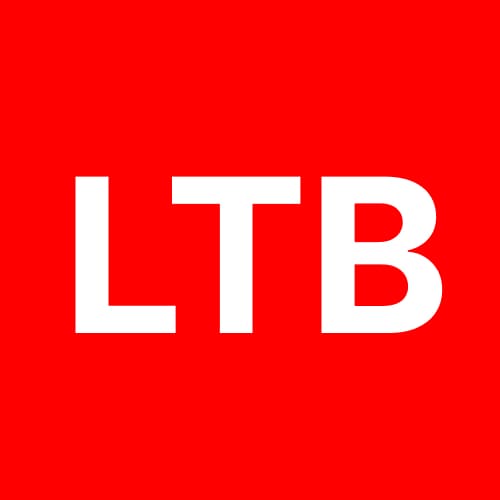
HOME / BLOG / STATISTICS
Influencer Marketing Statistics 2025: 99+ Stats & Insights You Need
- October 11, 2025
- Bill Nash
- 4:44 pm
Influencer marketing has evolved from a buzzword to a foundational component of modern marketing strategies. But what are the real numbers behind the hype in 2025? In this definitive guide, we aggregate the most current and actionable statistics on influencer marketing—covering market growth, ROI, platform breakdowns, costs, adoption, demographic behaviors, and emerging trends. We also intersperse analysis, caveats, and recommendations so you can use this data strategically.
Let’s dive into what the numbers really say.
Table of Contents
Global industry size & budgets
Global influencer-marketing market size (2025 projection): ~US$32B–33B.
Year-over-year growth (2024→2025) projected at ~30–36% for the global market.
~86% of brands will use influencer marketing in major markets by 2025.
71% of marketers planned to increase influencer budgets in 2025 (survey trend).
~26% of brands now allocate over 40% of their digital ad budgets to creator/partner content in certain verticals (top-spenders cohort).
Micro-influencer programs are the fastest-growing budget line for many mid-market brands. (industry trend summary)
~60% of businesses run influencer programs in-house; ~40% use agencies.
Brands working with creators typically deploy 5–30 influencers per campaign depending on goals. (benchmark ranges)
Short-form video commands the largest share of new influencer budget increases (TikTok/Reels/Shorts).
Influencer matchmaking and management platforms saw a surge in platform signups and pricing in 2024–25. (platform market trend)
United States
U.S. influencer sponsored-content spending will surpass $10 billion in 2025 (est. $10.5B).
U.S. creator revenue from sponsored content rose ~15–24% YoY in recent forecasts.
~86% of U.S. marketers use influencer marketing (2025 estimate).
Average U.S. CPMs and per-post fees increased in 2024–25 as demand exceeded supply for top creators. (market observation)
Brands in the U.S. increasingly measure conversions (sales/ATC) as primary KPI vs. pure awareness. (trend)
Retail and beauty verticals are among the largest U.S. spenders on influencer partnerships. (spend distribution)
Nano and micro-influencers (<100K) captured more campaign volume as brands scale reach and authenticity. (benchmark)
Mid-market brands often negotiate affiliate or CPC links to manage cost and measure ROI. (tactical trend)
Brands report increasing use of long-term partnerships vs one-off posts (growing share, ~40–50% adopting).
Many U.S. brands require creators to provide content rights for paid repurposing (ads). (legal/contract trend)
Europe & UK
European brands also increased influencer budgets in 2024–25, with strong growth in UK, DACH and Nordics. (regional trend)
UK market mirrors U.S. in prioritizing short-form video and affiliate programs. (regional observation)
Micro-influencers remain top performers for engagement across EU markets. (benchmark)
Regulatory attention (disclosures, influencer ads rules) tightened in several European countries. (legal trend)
E-commerce brands in Europe often combine influencer content with localized landing pages for higher CVR. (tactical)
Podcasts and long-form YouTube remain niche but high-impact channels in certain European categories (finance, education). (channel insight)
Fashion and luxury brands in Europe still sign a higher share of macro/celebrity deals (brand fit). (vertical observation)
Influencer-driven live commerce experiments grew in southern and eastern Europe. (trend)
Local language creators outperform global English creators for conversion in many EU markets. (localization stat)
Cross-border partnerships need VAT/contract clarity — a growing pain point for European brands. (operational note)
Asia & Southeast Asia
Asia Pacific is a major growth region for influencer marketing and social commerce. (macro trend)
China’s influencer economy (KOLs, live commerce) remains one of the largest and most mature markets. (market fact)
Southeast Asia sees high discovery via short-form platforms (TikTok, local short video apps) — discovery rates 60%+. (regional behavior)
Mobile-first shopping + influencer content drives higher conversion in SEA than desktop. (behavioral trend)
Local micro and nano creators are heavily used to localize campaigns across SEA countries. (tactical)
Influencer-led live commerce and affiliate promotions grew fast in 2024–25 across APAC. (trend)
K-beauty and F&B are top verticals using influencers for direct-response campaigns in Asia. (vertical trend)
Many APAC markets combine influencer content with messaging apps (LINE, WhatsApp channels) for conversion. (local tactic)
Cross-platform creators (YouTube → Reels → TikTok) command premium collaboration fees in APAC. (pricing trend)
Brands increasingly use influencer content for regional ads, not just organic posts (repurposing). (content trend)
Platform-specific stats — TikTok, Instagram, YouTube, Facebook, Snapchat
TikTok average engagement rate per post (2024): ~2.18% (platform benchmark).
TikTok is the top discovery platform for Gen Z — ~60–70% discover new brands/products there.
Instagram remains a top platform for shoppable posts and Stories; 2B monthly users cited in 2025 marketing reports.
Instagram Reels is the fastest-growing content format for engagement on IG.
YouTube influencers remain the go-to for long-form product reviews and how-tos — high consideration. (platform role)
Shorts + Reels + TikTok (short-form) now receive the majority of creator budgets for awareness and conversion testing. (budget shift)
Snapchat and Twitch are niche but valuable for gaming, youth and direct engagement campaigns. (channel role)
Cross-posting creator content across platforms increases ROI when optimized for each format (campaign best practice). (practice)
Platform fees and content-type pricing differ widely — TikTok video fees typically lower for nano/micro but higher CPM potential. (pricing nuance)
Shopping features (IG Shops, TikTok Shop, YouTube Shopping) materially boost creator-driven direct sales. (platform commerce fact)
Influencer tiers & engagement
Micro-influencers (10K–100K) often deliver the highest engagement rates vs macro/mega creators.
Nano-influencers (<10K) have the best engagement per follower in many niches (higher authenticity). (benchmark)
Macro & celebrity influencers scale reach but usually show lower engagement % than smaller creators. (benchmark)
Median follower counts for Instagram creators used in brand campaigns often sit near 10K–50K for micro programs.
Engagement rates vary by vertical — fitness, sport and beauty often show higher average engagement.
Influencers with multi-platform followings command premiums vs single-platform creators. (pricing fact)
Average cost per TikTok post by tier (reported benchmarks): nano ~$15, micro ~$75, mid ~$687, macro ~$1,875, mega ~$13,750.
Engagement decay: larger accounts can see lower percentage engagement but higher absolute engagement (more likes/views). (metric nuance)
Brands running large micro-influencer programs often target 10+ creators to aggregate reach and social proof.
Creator audience authenticity (low fake follower %, real comments) is now a top selection criterion. (trend)
Industry verticals — Beauty, Fashion, F&B, Gaming etc.
Beauty & personal care remain top spending verticals for influencer collaborations. (vertical fact)
Fashion brands balance macro celebrity launches with micro creator styling content. (vertical tactic)
Food & Beverage uses creators for local restaurant discovery, product samplings and UGC recipes. (vertical tactic)
Gaming and tech lean heavily on streamers and long-form demos (Twitch/YouTube). (vertical fact)
Travel & hospitality rely on high-quality visual creators and often negotiate sweepstakes/campaign bundles. (vertical practice)
Finance & B2B use long-form thought leadership and micro-influencers for credibility. (vertical tactic)
Retail & e-commerce favor affiliate models and trackable links for direct ROI. (vertical fact)
CPG brands increasingly use creators for product-trial and demo content to drive trial purchases. (vertical trend)
Beauty influencer partnerships often include product seeding, affiliate codes, and exclusive bundles. (tactic)
Direct-to-consumer (DTC) brands report strong CAC improvements when combining paid ads + creator content. (result)
ROI, KPIs & measurement
Influencer marketing average ROI benchmark: ~$4–$6 returned per $1 spent across different analyses (commonly reported $5.78).
Many brands see better content performance from influencer content when repurposed for paid ads vs brand creative. (benchmark)
Primary KPIs: reach/awareness (top), engagement, traffic, conversions/sales. (industry standard)
Tracking methods: unique coupon codes, UTM links, affiliate pixels, promo landing pages — still the most reliable. (measurement practice)
Brands increasing spend often move from impressions → measurable commerce KPIs within 6–12 months. (maturity curve)
Average conversion rates from creator content vary widely by vertical; e-commerce/beauty often see higher CVRs. (benchmark)
Affiliate and performance-based influencer programs reduce upfront cost and improve measurable ROI. (tactic)
View-through and assisted conversions often show influencer campaigns’ indirect value (helped conversions). (measurement insight)
Many CMOs now require blended metrics (LTV, CAC adjustments) before scaling influencer budgets. (finance practice)
UGC asset libraries from influencers cut creative production costs and improve ad relevance for paid campaigns. (benefit)
Content formats, creative trends & operations
Short-form video (TikTok/Reels/Shorts) is the most requested format by brands in 2024–25.
Carousel/Stories still perform well for product detail and swipe-to-shop CTAs on Instagram. (format fact)
Repurposing influencer clips into paid ads often increases CTR and lowers CPAs relative to brand ads. (benchmark trend)
~47% of marketers prefer long-term partnerships to one-off posts (trend toward retainers).
Creator contracts more commonly include content rights for paid usage and exclusivity windows. (contract trend)
FTC and platform disclosure requirements force clearer “#ad”/“sponsored” labeling — non-compliance risk increased. (legal fact)
AI-assisted influencer tools (briefing, editing, performance forecasting) are being adopted by ~70–80% of marketing teams. (tech adoption trend)
AI-only / fully synthetic influencer experiments saw a pullback in 2025 as brands questioned authenticity. (trend)
Key campaign challenges: measuring true ROI, fake followers/fraud, disclosure compliance, and content fatigue. (industry problems)
Successful programs increasingly mix organic, paid, affiliate and UGC repurposing into one funnel. (best practice)
Brands that test many small creator partnerships often scale faster than those relying only on a few big names. (operational insight)
Campaigns that combine creators + paid retargeting show stronger CVR improvements than creators alone. (tactical result)
Influencer program maturity correlates with internal ops: brief templates, payment SLAs, content libraries, legal templates. (implementation detail)
Creator partner health (engagement, comment quality, follower growth) is now monitored monthly by top brands. (governance)
Many brands now run creator pools/ambassador programs (ongoing) rather than single activations for seasonal launches. (program model)
Affiliate codes and direct links remain the most reliable per-creator measurable methods for sales attribution. (measurement)
Campaign fraud detection (bot/fake follower tools) is in higher demand among marketers. (security trend)
Creators who co-develop product lines (collabs) deliver stronger long-term brand ROI than simple endorsements. (collaboration insight)
Brands reporting the best influencer-driven ROI also repurpose the same assets across ad channels for efficiency. (playbook)
The next 12–24 months: expect continued growth in short-form commerce, stricter disclosure enforcement, and more AI tools assisting but not fully replacing human creators. (forward look)
Ready to Grow Your Business?
At Marketing LTB, we specialize in helping businesses like yours thrive online. From strategic digital marketing and branding to web development and social media management, we offer the tools and expertise to elevate your brand and drive real results.
Let’s build something amazing together, get in touch with us today!

About Marketing LTB
Marketing LTB is a full-service marketing agency offering over 50 specialized services across 100+ industries. Our seasoned team leverages data-driven strategies and a full-funnel approach to maximize your ROI and fuel business growth. Discover how our expertise can drive revenue for your business>

About the author, Bill Nash
Bill Nash is the CMO of Marketing LTB with over a decade of experience, he has driven growth for Fortune 500 companies and startups through data-driven campaigns and advanced marketing technologies. He has written over 400 pieces of content about marketing, covering topics like marketing tips, guides, AI in advertising, advanced PPC strategies, conversion optimization, and others.
